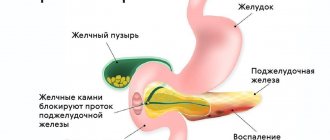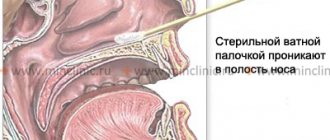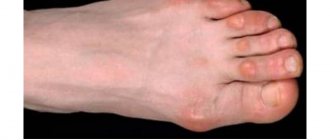Local gynecologist
Lukyanova
Yana Sergeevna
Obstetrician-gynecologist, endosurgeon Member of the European Society of Gynaecological Endoscopy Member of the European Society of Human Reproduction and Embryology
Make an appointment
Vulvovaginitis is a primary non-infectious or infectious inflammation of the mucous membrane of the external genitalia and vagina in girls or women. Most often, vulvovaginitis is diagnosed in girls under ten years of age, as well as in postmenopausal women, which follows from the characteristics of age-related physiology. Doctors call the peak incidence period from 3 to 7 years. The disease is characterized by a high prevalence; such a diagnosis is made in 60–80 percent of all cases. The complexity of the problem lies in the sluggish and slow progression of the disease. Often doctors have to deal with relapses and transition to the chronic stage, which is more difficult to treat. In addition, vulvovaginitis is treated in combination with the elimination of the inflammatory process of other organs of the genitourinary system, as well as as a possible development of long-term consequences of reproductive dysfunction of the woman’s body.
Classification
Based on the clinical and etiological principle of the development of diseases, two types of vulvovaginitis are distinguished:
- primary non-infectious,
- primary infectious.
Primary non-infectious vulvovaginitis is characterized by traumatic, allergic, parasitic, dyshormonal, dysmetabolic origin and occurs with specific secretions.
According to etiology, infectious diseases are:
- nonspecific,
- specific.
They are classified according to age criteria:
- vulvovaginitis in girls,
- women of childbearing age,
- postmenopausal women.
According to the duration of the flow, the following are distinguished:
- acute (up to one month),
- subacute (up to three months),
- chronic (more than three months).
According to the nature of the course, vulvovaginitis is:
- persistent,
- recurrent.
Symptoms and signs
What is it and how does the disease manifest itself? Before diagnosis, the gynecologist communicates with the patient, listening to all her complaints. It could seem. that in each individual case the disease has its own symptoms, however, despite the many different etiological factors of vulvovaginitis, their clinical signs are generally similar.
Acute vulvovaginitis is characterized by pronounced signs of a local inflammatory process. Patients, before they are given such a diagnosis, during consultation with a doctor complain of the following symptoms: pain, burning and itching, which become stronger during urination, when walking, and sexual intercourse.
Upon examination, the external genitalia of patients look swollen, the doctor observes hyperemia of the vulva, and symptoms such as redness, scratching and maceration of the skin of the perineum and thighs are not uncommon.
Severe and advanced stages of vulvovaginitis are characterized by the appearance of erosions in the area of the external genitalia. Children suffering from this disease develop neurotic reactions due to itching, symptoms of anxiety appear, and sleep is disturbed.
The manifestation of general infectious symptoms (body temperature rises, regional lymph nodes enlarge) occurs in rare cases. If the patient comes with such symptoms, this should especially alert the doctor, who will prescribe additional diagnostic measures.
Usually they complain about the presence of discharge, which differs in each specific case. They can be scanty or abundant in volume, and distinguish between watery, serous-purulent, purulent, and bloody discharge in nature. If we are talking about curdled discharge, then thrush is treated.
Often a characteristic of the discharge is an unpleasant specific odor; the presence of such a symptom is also a reason for conducting examinations.
In the chronic form of vulvovaginitis, the main symptom is pathological discharge from the genital tract and a feeling of constant persistent itching in the vulva area. The disease worsens after hypothermia, poor nutrition (abuse of sweets, spicy foods, excessive consumption of extractive substances), and intercurrent diseases.
In little girls, this form of the disease leads to another problem. The disease promotes the formation of synechiae (fusion) of the labia minora, which can interfere with the process of urination. Prolonged vulvovaginal inflammation leads to an even more serious symptom - the development of cicatricial adhesions in the vagina. With such a disease, further sexual life will be very difficult.
In the case of upward spread of infection, the following often develop: endometritis, salpingitis, oophoritis. Vulvovaginitis of various etiologies is especially dangerous for pregnant women. In principle, it is undesirable to get sick with them, but it is necessary to treat vulvovaginitis. Because if you do not consult a doctor in a timely manner and do not cure such a condition, it can cause spontaneous miscarriage, the development of chorioamnionitis, postpartum endometritis, and infections of newborns.
Are you experiencing symptoms of vulvovaginitis?
Only a doctor can accurately diagnose the disease. Don't delay your consultation - call
Diagnostics
What tests do you need to take to check if you have the disease? In order to identify and clarify the diagnosis of the etiological form of vulvovaginitis in women, the hospital performs comprehensive instrumental and laboratory diagnostics. The disease is diagnosed by performing the necessary examinations, tests, and using various diagnostic methods.
The doctor performs a gynecological examination in a speculum (not performed on girls). According to indications, colposcopy (vaginoscopy is performed for girls) and cervicoscopy are prescribed. Examination in the mirrors of women reveals signs of inflammation: swelling of the mucous membranes of the vagina and vulva, hyperemia, the presence of dense gray films on the surface of the vagina, and abundant leucorrhoea (pathological discharge). Signs of inflammation are swelling and hyperemia of the mucous membrane, and pathological vaginal discharge. In some cases, the use of the method, namely the insertion of a gynecological speculum, which is carried out by a doctor, is characterized by pain for the patient.
A smear analysis of flora from the vagina, cervical canal and urethra (urethra) is mandatory. In girls, analysis is taken using a special method, exclusively from the posterior fornix of the vagina and urethra using a special Volkmann spoon. The inflammatory nature of the pathological process is revealed if the analysis shows an increased number of leukocytes and the presence of bacteria.
Mandatory methods are PCR diagnostics for the addition of other diseases, tests for major urogenital infections that are transmitted through sexual contact, including tests for trichomoniasis, gonorrhea, mycoplasmosis, ureaplasmosis, gardnerellosis, human papillomavirus (HPV), cytomegalovirus (CMV).Also It would be a good idea to get tested for chlamydia and genital herpes. The most highly accurate diagnostic method is the fluorescent antibody (MFA) method.
In order for the treatment to achieve maximum effect in the future, bacteriological culture of the vaginal microflora is performed to determine sensitivity to antibacterial drugs, which in the future makes it possible to quickly cope with the disease.
A general urine test is mandatory; girls are also scraped for enterobiasis.
Differential diagnosis is carried out between specific and nonspecific vulvovaginitis. To exclude inflammatory pathology of the uterus and appendages, an ultrasound scan of the pelvic organs is performed.
Factors in the development of vulvovaginitis
- change of sexual partner;
- pregnancy;
- anemia;
- hypothermia;
- taking antibacterial and hormonal drugs.
Diagnosis
is based on the patient’s complaints, symptoms, examination data, and laboratory test results.
To determine the cause of this disease, the following laboratory tests are carried out: microbiological examination of the vaginal area, testing for STDs using the PCR method, bacterial culture with determination of sensitivity to drugs (antibacterial and antimycotic).
Causes
Many people who are faced with this diagnosis are looking for the reasons for the development of this unpleasant condition. It should be noted that the main role in the development of the disease is given to the infectious factor. In girls under 10 years of age, the pathogens are representatives of nonspecific bacterial microflora. The main cause is Escherichia coli, in second place are Staphylococcus aureus and Diplococcus; carriers can be enterococci, chlamydia, and anaerobes. In women of childbearing age, vulvovaginitis is most often caused by pathogens of genital candidiasis (in 30-45 percent of cases); the cause of the disease can also be a nonspecific bacterial infection. The cause of the development of the disease is found in unprotected sexual intercourse, which contributes to the occurrence of vulvovaginitis due to sexually transmitted infections: chlamydia, gonorrhea, mycoplasmosis, ureaplasmosis, trichomoniasis, genital herpes and other STIs.
Regardless of the age criterion, improper intimate hygiene is considered to be a factor provoking the development of vulvovaginitis; Moreover, the reasons may lie not in a lack of hygiene procedures, but, on the contrary, in their excess. It should be remembered that too frequent washing and douching with the use of antiseptics and cleansers is just as dangerous as neglecting hygiene procedures.
Uncontrolled treatment with antibiotics, taking glucocorticoids, cytostatics, COCs, and radiation therapy can provoke the disease with the subsequent addition of an infectious-inflammatory process.
Pregnancy, genital prolapse, trauma and scratching of the vulva, eczema of the skin of the perineum and anus, chronic stress, and prolonged uterine bleeding can lead to the development of vulvovaginitis.
Damage to the vagina and vulva occurs with genital tuberculosis and diphtheria. Recently, experts have been talking about an increase in the etiological role of microorganism associations in the development of vulvovaginitis.
The causes of primary non-infectious forms of the disease are foreign bodies in the vagina, masturbation, helminthic infestations (enterobiasis).
Recurrent vulvovaginitis is observed in individuals who suffer from endocrine metabolic disorders (including diabetes mellitus, obesity), genitourinary tract infections, intestinal dysbiosis, allergies, and common viruses. In the postmenstrual period, there is a high incidence of atrophic vaginitis.
Risk factors include:
- stress;
- injury to the vulva and/or vagina;
- pregnancy status;
- certain medications (use of antibiotics, cytostatics, glucocorticosteroids);
- development of hemorrhoids;
- presence of uterine bleeding;
- genital prolapse;
- immunodeficiency states;
- eczema of the perineal skin.
In children, the high prevalence of the disease is due to a state of hormonal rest (lack of ovarian function), anatomical features (close location of the anus to the genitals, thin and loose mucous membrane), alkaline reaction of vaginal secretion, and improper hygiene.
During the postmenopausal period, women may get sick due to changes in the vaginal microflora and a decrease in local protective mechanisms against the background of an age-related lack of the hormone estrogen.
A healthy woman is not afraid of the disease. Her body has natural local defense mechanisms that do not allow pathogens to multiply and penetrate into the underlying tissues, limiting and preventing the inflammatory process from spreading. Such mechanisms include intact mucous membrane, normal, balanced vaginal microflora, pH 4-4.5. With a decrease in the protective properties of the vaginal ecosystem, vulvovaginitis develops, which widely opens the door for the upward spread of infection to the internal genital organs.
Vulvovaginitis in infants, as a rule, occurs due to infection during the passage of an infectious mother through the birth canal. Moreover, transplacental infection of the fetus is possible, in particular with a viral course of the disease.
Pathogenesis
Until now, the pathogenesis of vulvovaginitis has not been sufficiently studied. It is a complex process, and to understand it it is important to take into account the features of female anatomy. The walls of the female vagina have three layers. The inner layer consists of stratified squamous epithelium. It accumulates glycogen , which feeds normal bacteria - lactic acid. The waste product of these bacteria, lactic acid, helps maintain a normal acidic environment, since it is destructive to most pathogens. Glycogen accumulates under the influence of sex hormones, and its maximum amount is observed approximately on the 26th day of the monthly cycle.
In addition, the protective mechanism of the vaginal mucosa is the exfoliation of the dead layer of epithelium and the process of self-cleaning. Dead epithelium along with bacteria is released from the genitals.
The importance of hormonal balance is noted. Thus, with normal estrogen , glycogen levels will remain normal, which will help maintain optimal microflora. progesterone production increases , glycogen levels may decrease. Progesterones are most actively produced before menstruation, so vulvovaginitis often worsens at this time.
Thus, most often, pathology develops when a shift occurs in the vaginal flora, and instead of lactobacilli, a mixed flora predominates.
Vulvovaginal candidiasis develops under the influence of fungi of the genus Candida. In this case, the disease is not caused by a change in the properties of the fungus, but by a decrease in the body’s defenses.
Doctors treating this disease
Which doctor treats this condition? If you suspect any type of vaginitis, women need to make an appointment with a gynecologist at a antenatal clinic or a private medical center to choose the most effective method of therapy. Since vaginitis is treated on an outpatient basis, it makes no sense to go to the gynecological departments of city and regional hospitals. In order to clarify the diagnosis of recurrent vulvovaginitis and perform additional studies, consultation with specialized specialists may be required: venereologist, allergist, endocrinologist, urologist, etc.
Treatment
How to treat vaginitis? During the existence of the disease, doctors have developed a large number of methods for its treatment. There are several methods of treating this disease, but effectiveness occurs only with an integrated approach to therapy and the patient’s compliance with all recommendations given by the attending physician. Treatment of vulvovaginitis must be carried out without fail, regardless of the stage or form of the disease, severity of symptoms, or age of the patient. Will cure the disease:
- use of etiotropic drugs,
- local treatment of the genitals with disinfectant and antiseptic compounds,
- elimination of provoking factors and associated ailments, restoration of normal vaginal microflora.
The etiotropic method of treating vulvovaginitis involves the use of medications that act directly on the pathogen. For this purpose, local (in the form of vaginal tablets, suppositories, ointments) and systemic antibiotics are prescribed. Considering the high prevalence of vulvovaginitis of polymicrobial etiology, the use of multicomponent drugs that have a local antibacterial, antimycotic and antiprotozoal effect is very important. The use of this method has good results.
For vulvovaginal candidiasis, treatment methods are somewhat different. It is necessary to take and use local antifungal drugs.
The principles of treatment are aimed not only at destroying the pathogen, but also at strengthening the immune system and restoring the vaginal microflora. Methods for restoring microflora involve intravaginal administration of probiotics and their oral administration. The doctor gives recommendations for the treatment of vaginitis; prices vary depending on the class and equipment of the medical center.
Discussion
Resolution of a multidisciplinary meeting of experts on the topic “Diagnostics and treatment of vulvovaginal infections today. Real clinical practice" recommends the use in the work of an obstetrician-gynecologist of modern combined topical medications containing drugs from the group of imidazoles (metronidazole, which is active against protozoa, facultative anaerobes) and from the group of azoles, with proven safety and effectiveness against candidiasis infection [16].
The currently most studied combination of drugs in the treatment of vulvovaginitis of mixed etiology in women both at the preconceptional stage and during pregnancy is the combination of metronidazole and miconazole, which has antibacterial, antiprotozoal and antifungal effects. Studies show the high effectiveness of various drug dosing regimens. Thus, an assessment of the effectiveness and tolerability of a drug containing 750 mg of metronidazole and 200 mg of miconazole in the treatment of BV and VVC for 7 days in pregnant women in the second trimester revealed high therapeutic efficacy in the group of pregnant women with BV - 96% (48/51) and in the group with VVC - 94.2% (65/71) [17]. A similar effect was obtained using 500 mg metronidazole + 100 mg miconazole [18]. A positive effect when assessing subjective and laboratory parameters in patients with BV during treatment 14 days after therapy was achieved in the form of normalization of the clinical and microscopic picture in 92% and 94.2% of cases, respectively, against the background of good tolerability of the drug. Our own results show comparable effectiveness of the therapy according to the criterion of clinical and laboratory cure in 90.4% and 88.5% of cases, respectively, in patients in the comparison group, but slightly exceed the figures obtained previously by E. Ozyurt et al. [19], in which the overall microbiological cure rate for mixed infections was 86% (of which 93% were trichomoniasis + BV and 73% were BV + VVC).
Studies using topical preparations for the treatment of vulvovaginal infections of mixed etiology on a gel base containing 10 mg of metronidazole and 20 mg of clotrimazole per 1 g of gel showed high bioavailability of the vaginal gel compared to vaginal tablets [20]. The data available in the literature indicate the high clinical effectiveness of the drug M+K in vitro
against the key microorganisms that cause BV (
G. vaginalis
and
A. vaginae
) and VVC (
C. albicans
and
C. glabrata
) with no effect on the main types of lactobacilli -
L. iners
and
L. crispatus
[21].
A study involving 200 pregnant women with vaginal infections of non-specific etiology who were treated with vaginal gel (M+C), compared with patients (n=100) who were treated with vaginal tablets (metronidazole 100 mg + miconazole nitrate 100 mg), demonstrated a high clinical - laboratory effectiveness of two-stage therapy for nonspecific vaginal infections in the compared groups at the end of the course of treatment (100% in both groups) and after 1 month. observation (99.0% versus 94.0%, respectively, p>0.1), while maintaining high clinical and laboratory efficiency after 2 months. in pregnant women of the main group - 98.0% versus 90.0% in the control group (p<0.05), with a lower incidence of pregnancy complications (8.0% versus 20.0%, p<0.05), childbirth and postpartum period (18.0% vs. 37.0%, p<0.01), respectively [10]. Our data revealed comparable effectiveness of the drug M+K in the treatment of nonspecific vulvovaginitis of mixed etiology in pregnant women at the end of the third trimester in terms of the frequency of achieving clinical and laboratory cure in 94.3% and 86.8% of patients in the main group. Another pilot study showed high effectiveness of using vaginal gel (M+C) in pregnant women with VVC and confirmed new coronavirus infection COVID-19 in the second trimester of pregnancy according to the criterion of therapeutic cure in 96.9% (31/32) of patients with a relapse rate of 37–39 weeks 9.4% (3/32) of cases [22].
Indications for the disease
A number of doctor's indications for this disease will help alleviate symptoms and recover faster.
If you have vulvovaginitis in childhood, you should not ignore the testimony of specialists. They relate to general health measures, elimination of foci of chronic infection, and personal hygiene.
In older women, vulvovaginitis develops against the background of physiological changes in the vaginal mucosa. To relieve the symptoms of vulvovaginitis, they are shown sitz baths and douching with herbal decoctions, antiseptic solutions, and the use of vaginal suppositories. Treatment of underlying pathological conditions is required to reduce allergic mood, correct glycemic levels in diabetes mellitus, sanitize infectious foci, etc.
If specific vulvovaginitis is detected, treatment of the sexual partner is required. Sexual rest is required until the end of treatment.
Correction of nutrition, normalization of weight, and changes in hygiene habits are also important. In certain cases, the elimination of provoking factors leads to a permanent cure of vulvovaginitis without subsequent relapses. To monitor the situation after a course of therapy, a control bacterioscopic and microbiological analysis of discharge from the genital tract is performed.
Preventive measures
It is easier to prevent any disease than to treat it. To prevent vulvovaginitis, the following measures are recommended:
- proper toilet of the vulva. You need to wash from front to back. Do not use products with an aggressive pH environment;
- wearing tailored underwear made from natural materials;
- use of barrier contraception;
- excluding douching without indications - this way you can wash healthy flora;
- visit a gynecologist for consultation 1-2 times a year.
Contraindications
There are several contraindications for the disease, and most of them relate to restrictions on the use of certain foods. In case of vulvovaginitis, it is strictly prohibited:
- consumption of alcoholic beverages, fatty, salty, spicy, smoked and sweet foods, foods with any food additives;
- Fast food, semi-finished products, instant food are prohibited;
- If you have an allergic predisposition, you should exclude foods that provoke allergy attacks.
Diet
Diet for candidiasis
- Efficacy: therapeutic effect after 10 days
- Terms: 3 months or more
- Cost of products: 1400-1500 rubles per week
During the treatment of the disease, it is recommended to follow a hypoallergenic diet. To ensure a positive effect on microflora, it is necessary to introduce the following products into the diet:
- Fermented milk foods - yoghurt, kefir, cream, sour cream, fermented baked milk.
- Foods high in vitamin A - seafood, liver, broccoli, viburnum.
- Products containing B vitamins - oatmeal and buckwheat porridge, corn, lentils, greens, eggs, mushrooms, sea buckthorn, raisins, sweet peppers, rose hips.
- Products containing vitamin C - citrus fruits, cabbage, berries, greens.
- Products containing vitamin E - dried fruits, nuts, herbs.
It is also important to maintain the correct drinking regime, consuming enough water, fresh juices, and fruit drinks.
During the treatment period you should not consume the following foods:
- Fatty food.
- Spicy dishes, smoked meats, pickles.
- Sweets.
- Alcohol.
Cost of initial appointment
The cost of treatment for vulvovaginitis at JSC Meditsina (Moscow) is presented in the table below. Please note that prices are listed by category to make it easier to find the service you need. The price of the primary appointment differs from the secondary one. From the table below, you will learn about prices for consultations, examinations, and medical procedures for both adults and children. If you have any questions, you can call our help desk and find out the prices for treatment or the cost of the examinations you need.
Advantages of treatment at the clinic of JSC "Medicine"
JSC "Medicine" is a modern multidisciplinary medical institution that provides a full range of medical services in accordance with the highest international standards. We offer emergency medical care, service in a clinic, a comfortable hospital, high-precision laboratory and instrumental diagnostics, and an ultra-modern Sofia Oncology Center.
The clinic of JSC "Medicine" uses the latest achievements in global healthcare. Among our advantages are the following:
- We are pleased to offer our patients a full range of medical services. We employ more than 300 specialists from 67 medical specialties. Our clinic provides a full range of medical services in various medical areas. There are 69 of them in total.
- We operate on the principle of continuity of stages of medical care: a physician-supervisor treats a patient as a family doctor, internist or pediatrician, coordinates treatment prescribed by specialists, and also participates in the treatment of his patients in a hospital.
- We work according to the best Russian and international standards. JSC "Medicine" is the first Russian medical center that is accredited according to the most reliable international standards for the quality of medical care, Joint Commission International.
- We provide guarantees of the quality of medical care. The Medicine Clinic is responsible for the quality of the services provided. If the complaint is justified, compensation may be paid.
- The best specialists work with us. We are proud of our doctors. Patients are advised by academicians of the Russian Academy of Sciences, professors, and famous foreign specialists. JSC Meditsina has developed a system for training doctors and exchanging experience with the most prestigious clinics in the world. Many areas of the clinic, including the sleep laboratory, traumatology and orthopedics center, chemotherapy and radiation therapy departments, were created in collaboration with foreign colleagues.
- JSC "Medicine" is a multidisciplinary university clinic. At our clinical and educational laboratory bases, scientific and clinical developments are carried out in many medical areas. We are advised by academicians and corresponding members of the Russian Academy of Sciences, professors and leading experts in various fields of medicine. The educational and laboratory base of the department is located in the building of the Medicine clinic.
- Exchange of experience with the best medical centers in the world, accredited by JCI, advanced training of doctors and partnerships with leading medical institutions in the USA, Europe and Israel put the Medicina clinic in a leading position. You can learn about our doctors, their work experience, education and experience on the resource of our medical center.
- We use an advanced IT infrastructure, using an electronic medical record (EHR) of our own design with a system for checking drug prescriptions. We have implemented digital archive solutions that allow storing the results of medical research obtained from various medical equipment (computer tomograph, MRI, X-ray machines, ultrasound equipment, endoscopic equipment). JSC Meditsina implemented a smart clinic project, which took into account high requirements for reliability, safety and fault tolerance.
For the convenience of our patients and their relatives, we have created a convenient client-oriented service. Making an appointment with a doctor and viewing your medical data is possible through a mobile application, a personal account on the website, or a Telegram bot. Test results come to hand on disk if you need to get a “second opinion” from specialists at other clinics. With the consent of hospital patients, their relatives can receive SMS notifications about the stages of surgical intervention and observe the hospital and ward online, making sure of the unsurpassed quality of the treatment methods provided in our clinic.










